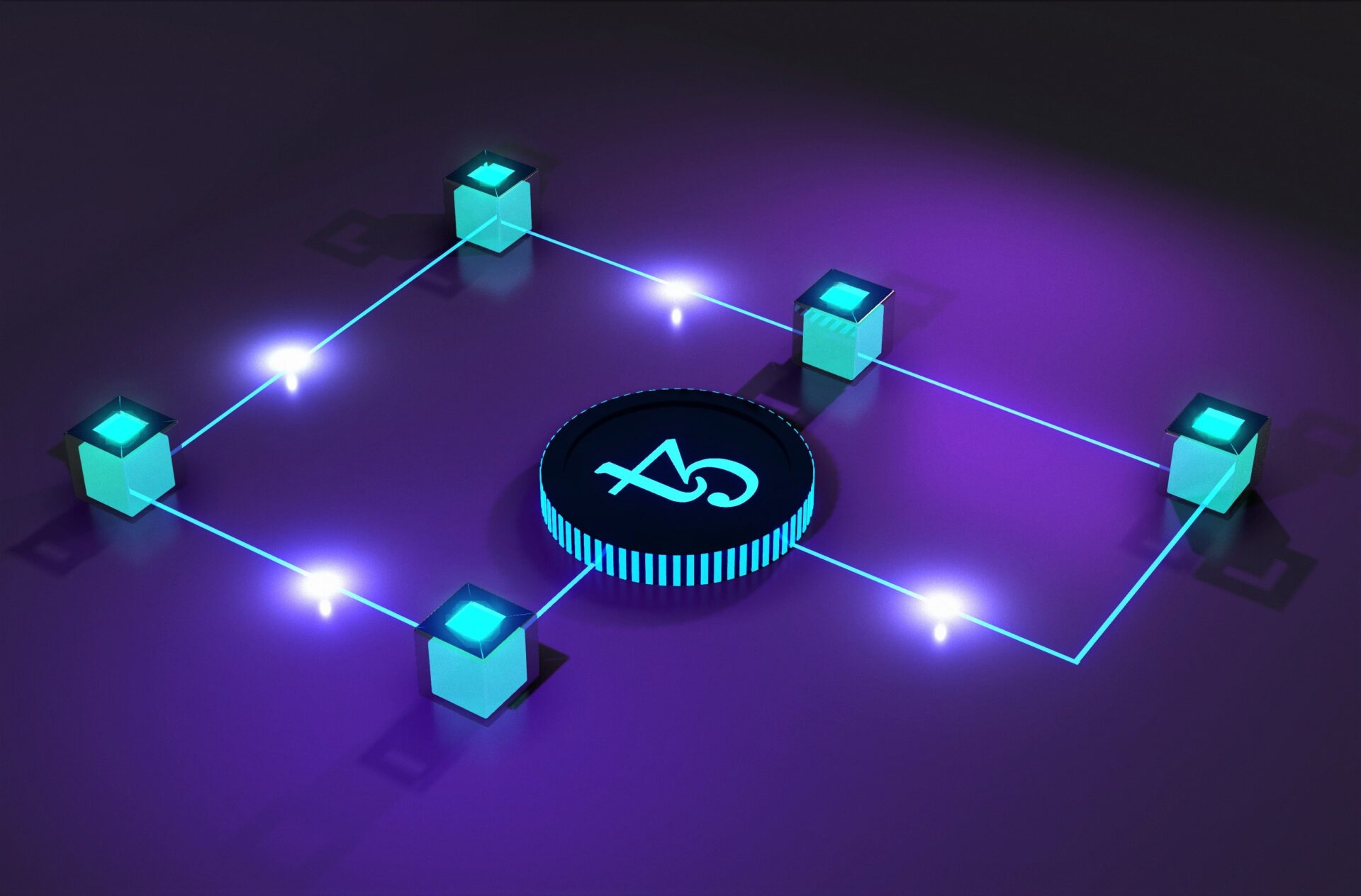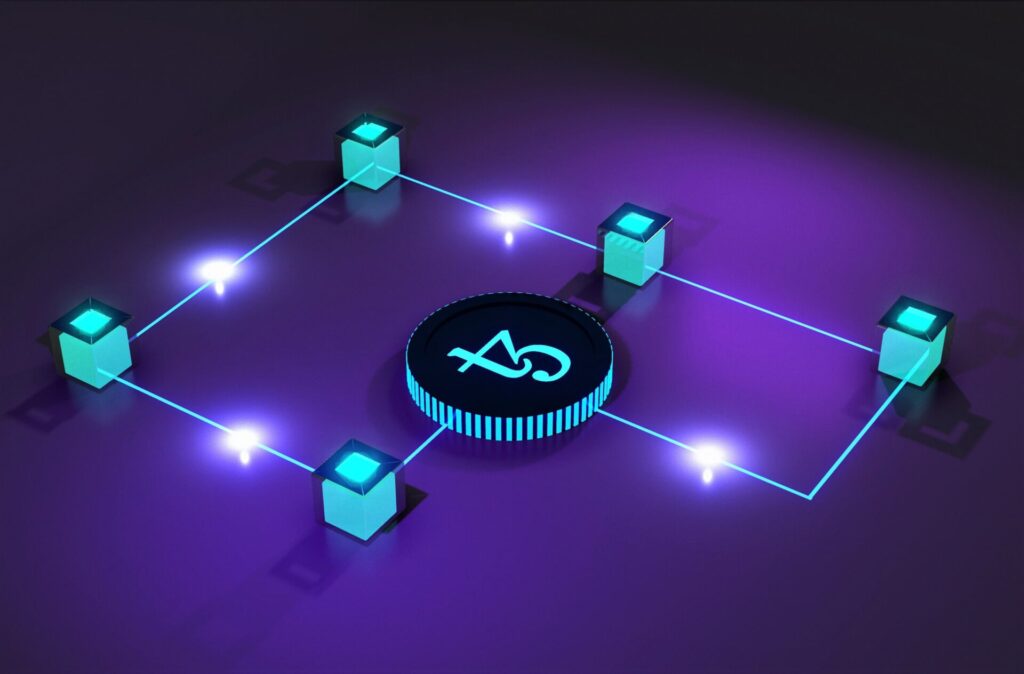Understanding How Blockhain Works : A Comprehensive Guide

How blockhain works in the world of technology has witnessed a revolutionary innovation known as blockchain. With its decentralized nature and robust security features, blockchain has gained significant attention across various industries. You’ve probably read it already: Understanding Blockchain Technology: Benefits, Applications, and Future Trends. In this comprehensive guide, we will delve into the workings of blockchain, exploring its basic components, the process of block formation and verification, consensus mechanisms, and the advantages and applications of this transformative technology.
See also : The Rising Tide: Ethereum Enterprise Adoption Drives Blockchain Revolution Excellent

I. Introduction to How Blockchain Works
A. Definition of Blockchain
Blockchain can be defined as a decentralized digital ledger that records transactions across multiple computers or nodes. It ensures transparency, immutability, and security by utilizing cryptographic techniques.
B. Importance of Blockchain
Blockchain has the potential to disrupt numerous industries by providing enhanced security, eliminating intermediaries, and enabling transparent and efficient transactions.
C. Overview of Blockchain Technology
This section will provide an overview of the underlying technology behind blockchain, including concepts such as distributed ledgers, cryptographic hashing, and consensus mechanisms.
II. Basic Components of How Blockchain Works
A. Blocks
- Structure of a Block
A block consists of data, a unique identifier called a hash, and a reference to the previous block, forming a chain of blocks. - Contents of a Block
A block contains transactional data, such as sender and receiver details, timestamps, and digital signatures. - Block Headers
Block headers include metadata such as the block’s hash, the hash of the previous block, and a nonce for mining.
B. Cryptography
- Encryption
Blockchain utilizes encryption algorithms to secure data transmission and storage, ensuring the confidentiality and integrity of information. - Hash Functions
Hash functions play a crucial role in blockchain by converting input data into a fixed-length hash value. This ensures data integrity and allows for quick verification. - Digital Signatures
Digital signatures provide authentication and non-repudiation of transactions in blockchain, ensuring that the sender’s identity is verified.
C. Peer-to-Peer Network
- Decentralization
Blockchain operates on a peer-to-peer network, removing the need for a centralized authority and allowing participants to interact directly. - Consensus Mechanisms
Consensus mechanisms, such as Proof of Work and Proof of Stake, ensure agreement among network participants on the validity of transactions and the order of blocks. - Nodes and Miners
Nodes are computers that maintain a copy of the blockchain, while miners validate transactions and create new blocks through complex mathematical computations.
III. How Blockchain Works
A. Block Formation and Verification
- Transaction Validation
Transactions are validated by network participants, ensuring that they meet predefined rules and criteria. - Block Creation
Validated transactions are grouped into blocks, which are added to the blockchain. The block creation process involves selecting transactions, verifying them, and creating a block header. - Block Verification
Once a block is created, it is broadcasted to the network, where other nodes verify its validity before adding it to their copies of the blockchain.
B. Mining Process
- Proof of Work
In Proof of Work consensus, miners compete to solve a complex mathematical puzzle. The first miner to find the solution receives the right to add the next block to the blockchain. - Difficulty Adjustment
The difficulty of the mining puzzle is adjusted to maintain a consistent block creation rate, ensuring that new blocks are added to the blockchain at regular intervals. - Rewards and Incentives
Miners are incentivized to participate in the mining process through block rewards, which may include cryptocurrency tokens or transaction fees.
C. Consensus Protocols
- Proof of Stake
Proof of Stake is an alternative consensus mechanism where validators are chosen based on the amount of cryptocurrency they hold and are willing to “stake” as collateral. Validators are then selected to validate transactions and create new blocks based on their stake.
- Delegated Proof of Stake
Delegated Proof of Stake introduces a system where token holders vote for a limited number of delegates who are responsible for validating transactions and producing blocks on behalf of the network. This mechanism enhances scalability and efficiency. - Practical Byzantine Fault Tolerance
Practical Byzantine Fault Tolerance (PBFT) is a consensus protocol suitable for permissioned blockchains. It ensures consensus among a group of known and trusted validators through a series of rounds, where the majority agreement is achieved.
IV. Advantages and Applications of Blockchain
A. Security and Transparency
How blockhain works offers enhanced security by employing cryptographic techniques, making it resistant to tampering and fraud. Additionally, its transparent nature allows all participants to view and verify transactions, promoting trust and accountability.
B. Elimination of Intermediaries
How blockhain works eliminates the need for intermediaries, such as banks or brokers, by enabling peer-to-peer transactions. This reduces costs, speeds up processes, and removes the risks associated with third-party involvement.
C. Use Cases in Various Industries
- Finance and Banking
How blockhain works has the potential to revolutionize the financial industry by streamlining cross-border payments, enabling faster settlements, reducing fraud, and improving transparency in auditing processes. - Supply Chain Management
How blockhain works can enhance supply chain transparency by tracking and recording the movement of goods, ensuring authenticity, and reducing counterfeiting. It enables stakeholders to trace the origin of products and verify their quality. - Healthcare
In the healthcare sector, blockchain can improve data interoperability, secure patient records, and streamline medical supply chains. It allows for efficient sharing of sensitive information while maintaining privacy and data integrity. - Voting Systems
How blockhain works can enhance the integrity and transparency of voting systems by providing secure and immutable records of votes. It eliminates the possibility of tampering or manipulation, ensuring fair and trustworthy elections.
V. Challenges and Limitations of How Blockchain Works
A. Scalability
One of the major challenges facing blockchain technology is scalability. As the number of transactions increases, the network may experience delays and higher costs. Solutions such as off-chain transactions and layer-two protocols are being developed to address this issue.
B. Energy Consumption
Proof of Work consensus mechanisms, used by popular cryptocurrencies like Bitcoin, require significant computational power, resulting in high energy consumption. However, the development of energy-efficient consensus mechanisms and the adoption of renewable energy sources are mitigating this concern.
C. Regulatory and Legal Challenges
Blockchain’s decentralized and borderless nature raises regulatory and legal challenges. Governments and institutions are working on establishing frameworks to govern blockchain technology, addressing concerns such as money laundering, fraud, and consumer protection.
D. Privacy Concerns
While how blockhain works ensures transparency, privacy can be a concern, particularly in public How blockhain works where transaction details are visible to all participants. Privacy-enhancing technologies, such as zero-knowledge proofs and selective disclosure, are being developed to address this issue.
VI. Future Trends and Development of Blockchain
A. Integration with Other Technologies
How blockhain works is being integrated with emerging technologies like artificial intelligence, the Internet of Things, and smart contracts. These integrations enhance the functionality and potential applications of blockchain, leading to more efficient and automated processes.
B. Interoperability between Blockchains
Efforts are underway to establish interoperability between different How blockhain works, allowing seamless communication and transfer of assets between disparate networks. This would promote collaboration and open new possibilities for decentralized applications.
C. Blockchain as a Service
Blockchain as a Service (BaaS) platforms are gaining popularity, providing simplified and scalable solutions for businesses to implement How blockhain works technology without the need for extensive technical expertise. BaaS platforms offer various tools and services, including development frameworks, smart contract templates, and hosting capabilities.
D. Government and Institutional Adoption
Governments and institutions are increasingly recognizing the potential of blockchain technology and exploring its adoption. Initiatives such as central bank digital currencies, How blockhain works-based land registries, and supply chain traceability programs are being implemented to harness the benefits of how blockchain works in the public sector.
VII. Conclusion How Blockhain Works
Blockchain technology has the potential to transform various industries by providing enhanced security, transparency, and efficiency. Understanding how blockhain works is essential to fully grasp its potential and identify suitable applications. By exploring the basic components of blockchain, the process of block formation and verification, consensus mechanisms, and its advantages and applications, we can appreciate the significant impact it can have on the way we transact and interact with digital systems.
However, blockchain technology is not without its challenges and limitations. Scalability, energy consumption, regulatory issues, and privacy concerns need to be addressed to fully unlock the potential of blockchain.
Looking ahead, the future of How blockhain works holds promising developments, including its integration with other emerging technologies, efforts towards interoperability, the rise of BaaS platforms, and increased government and institutional adoption.
As How blockhain works continues to evolve, it is crucial for individuals, businesses, and governments to stay informed, adapt to the changing landscape, and explore innovative use cases that can harness the power of this transformative technology. By doing so, we can pave the way for a more secure, transparent, and decentralized future.
And for those of you who want to grow your Instagram account, you can directly use our service free instagram followers and you can like your post on instagram with Free instagram likes







